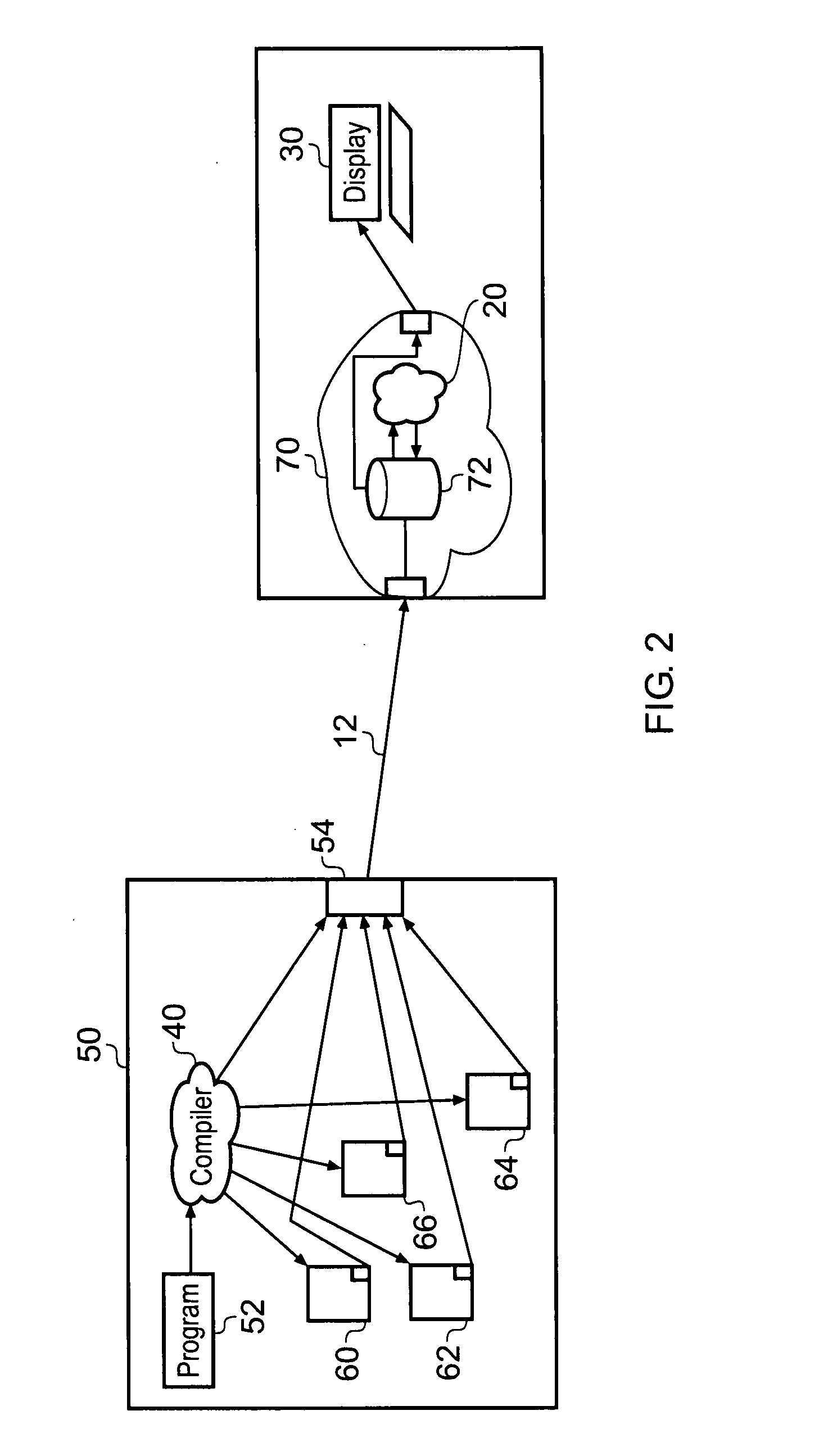Analyzing diagnostic data generated by multiple threads within an instruction stream
a diagnostic data and instruction stream technology, applied in the field of data processing, can solve the problems of not allowing the diagnosis of a significant part of the program, difficult for a programmer to understand the view of the program execution derived from the diagnostic mechanism such as debugging, and difficult to relate back to the original sequential program
- Summary
- Abstract
- Description
- Claims
- Application Information
AI Technical Summary
Benefits of technology
Problems solved by technology
Method used
Image
Examples
Embodiment Construction
[0091]FIG. 1 shows very schematically an embodiment of the present invention. This embodiment comprises a system 10 which is a multi-threaded program running on a multiprocessor system. When this system is being traced, a stream of trace data 12 which consists of a complex sequence of events of all the different threads and processes in the system is produced. This trace data is very hard to analyse and thus, the invention uses trace reordering logic 20 to reorder this trace into an order which more closely resembles the order of the original program and as such is easier to understand by a programmer. This reorder data is then input to trace user interface 30.
[0092]The trace reordering logic can reorder the trace data in a number of ways. In the embodiments shown, the complex sequence of events that are output from the system being traced comprise synchronisation events which are indicated as capitals in the stream of data 12. These synchronisation events are events where one proce...
PUM
 Login to View More
Login to View More Abstract
Description
Claims
Application Information
 Login to View More
Login to View More - R&D
- Intellectual Property
- Life Sciences
- Materials
- Tech Scout
- Unparalleled Data Quality
- Higher Quality Content
- 60% Fewer Hallucinations
Browse by: Latest US Patents, China's latest patents, Technical Efficacy Thesaurus, Application Domain, Technology Topic, Popular Technical Reports.
© 2025 PatSnap. All rights reserved.Legal|Privacy policy|Modern Slavery Act Transparency Statement|Sitemap|About US| Contact US: help@patsnap.com



